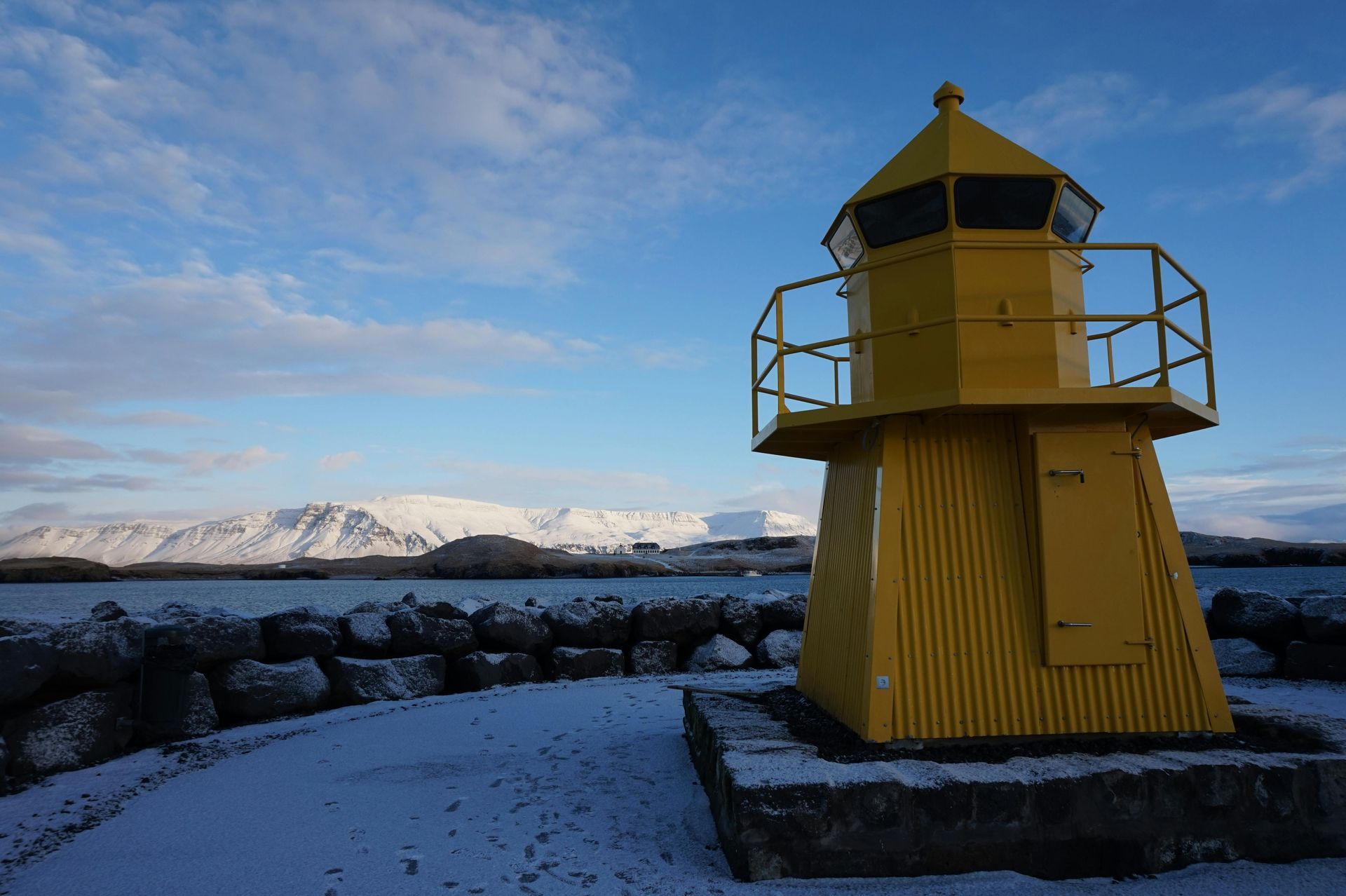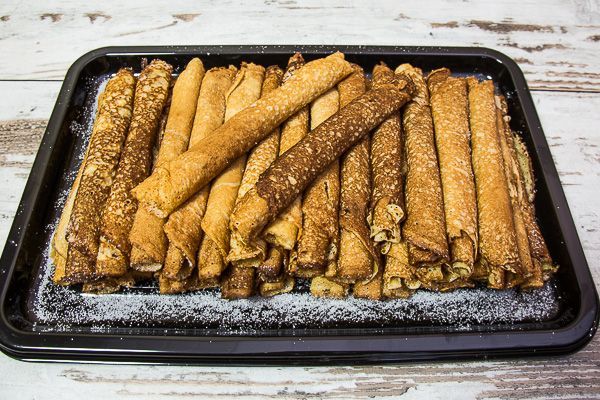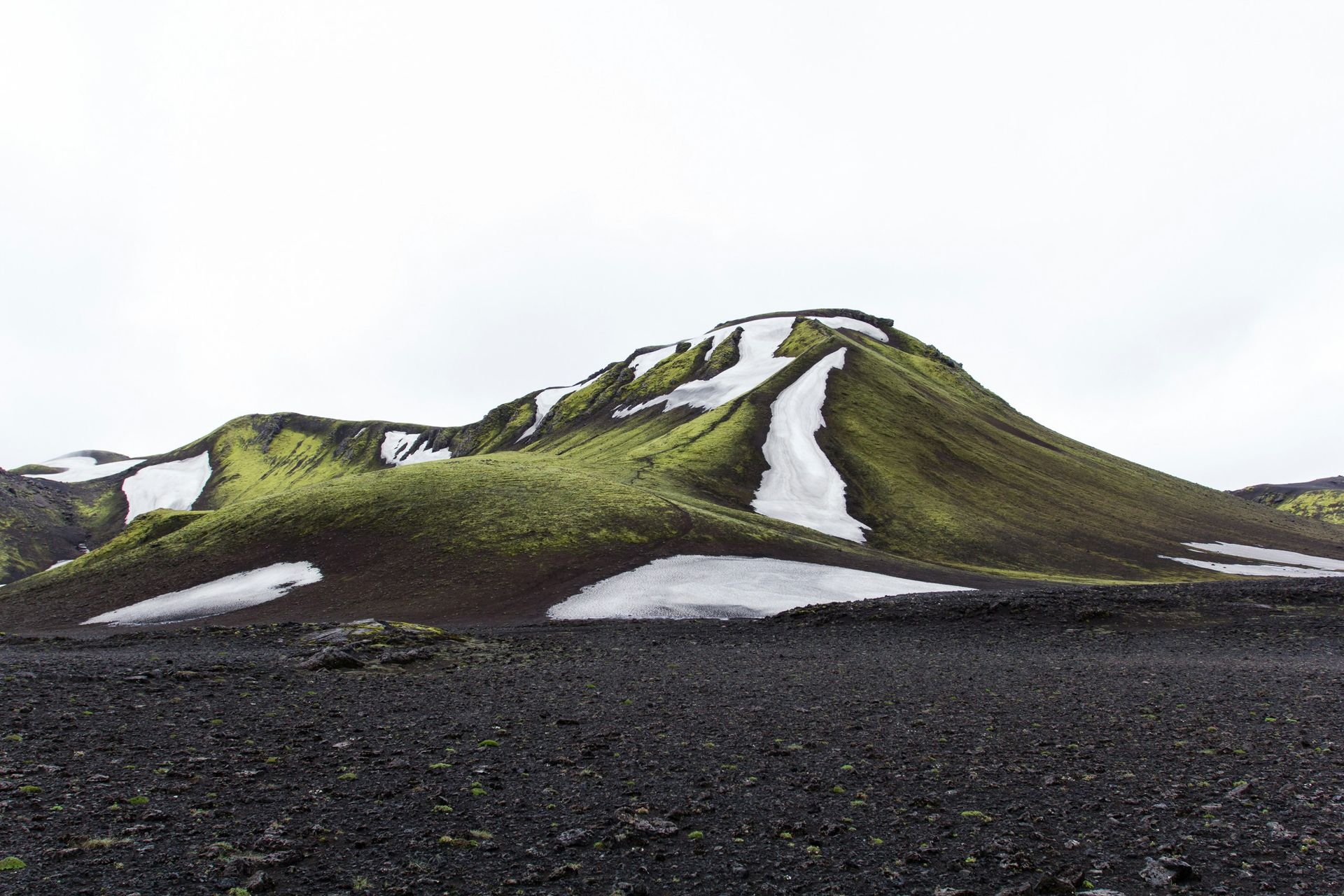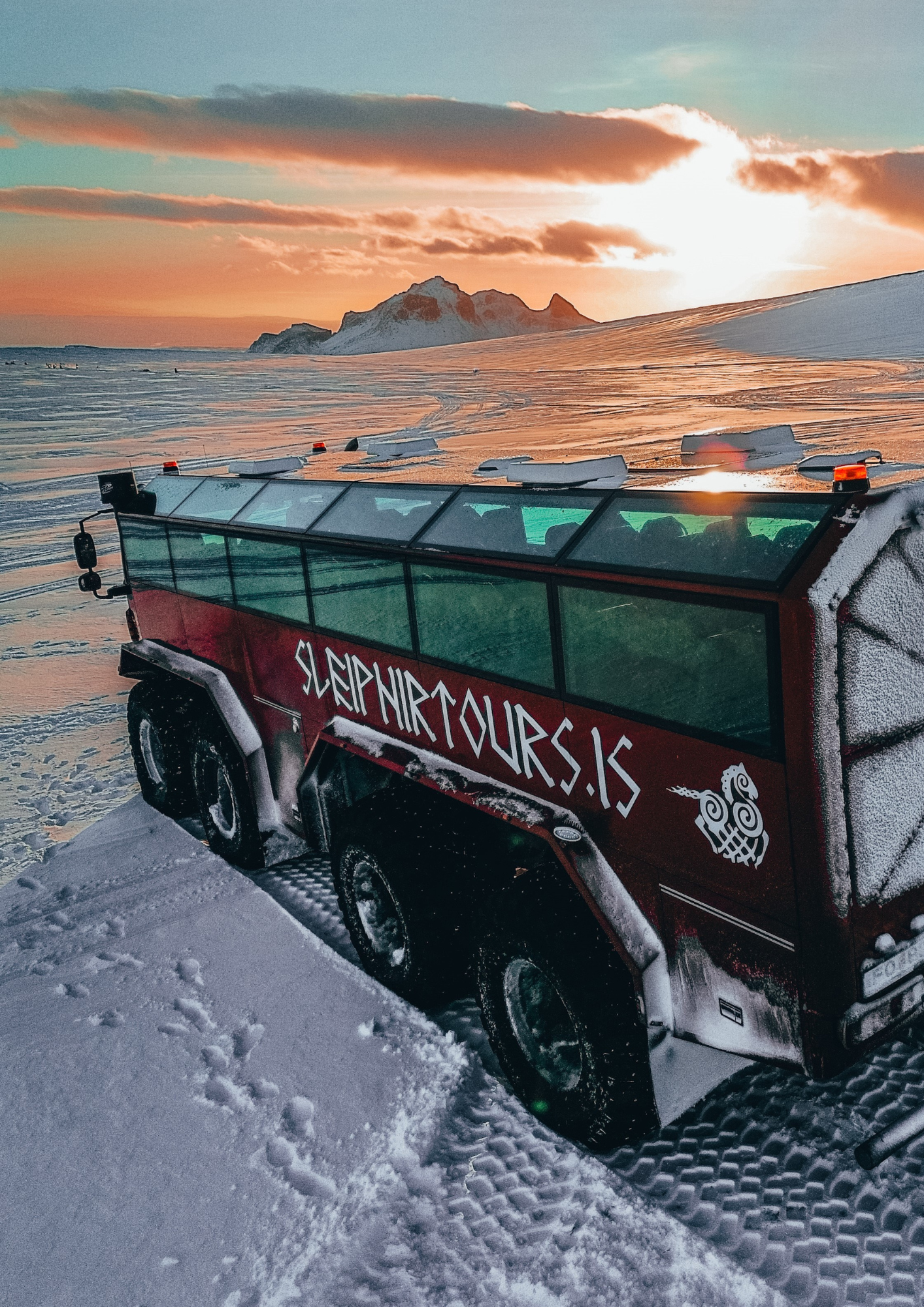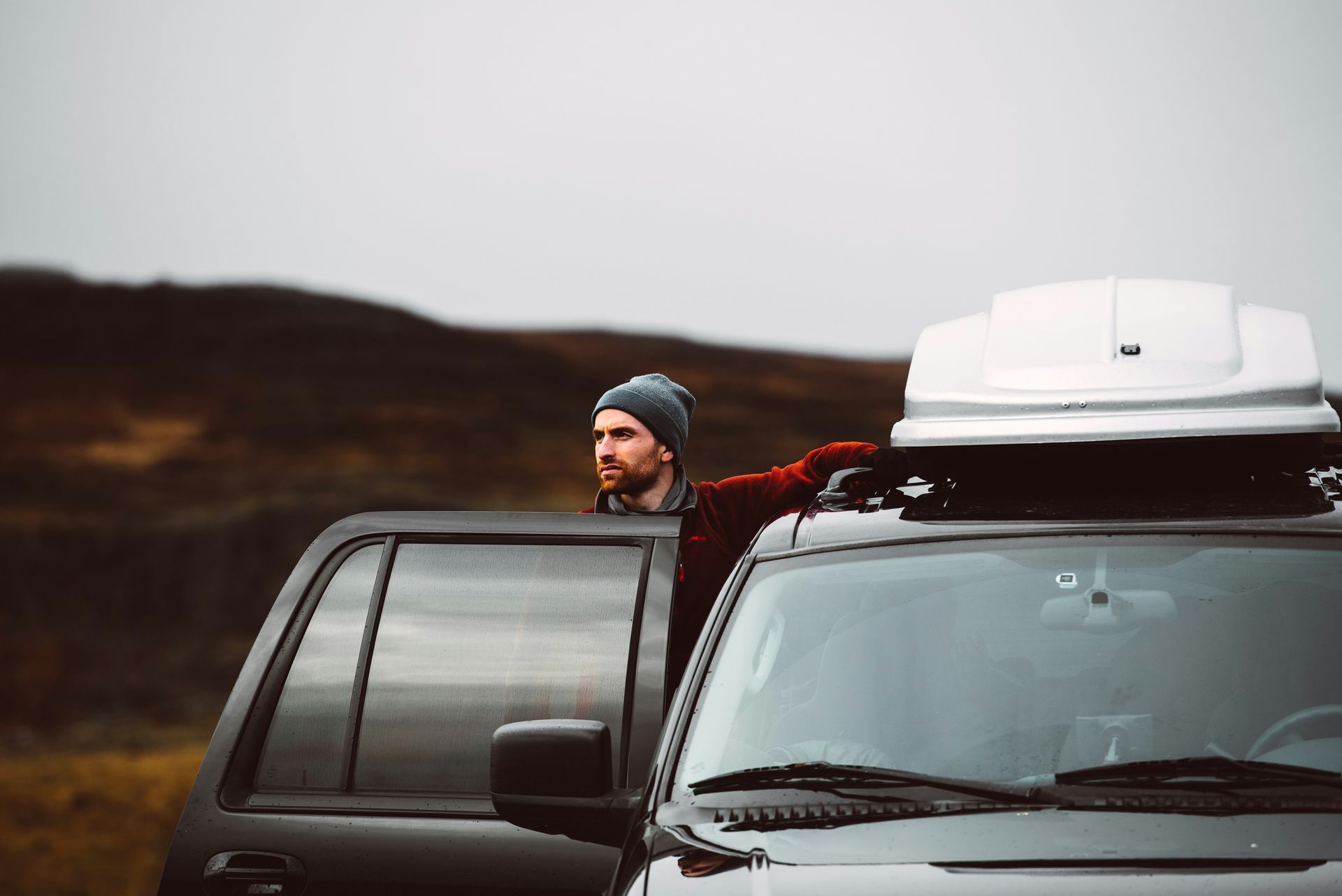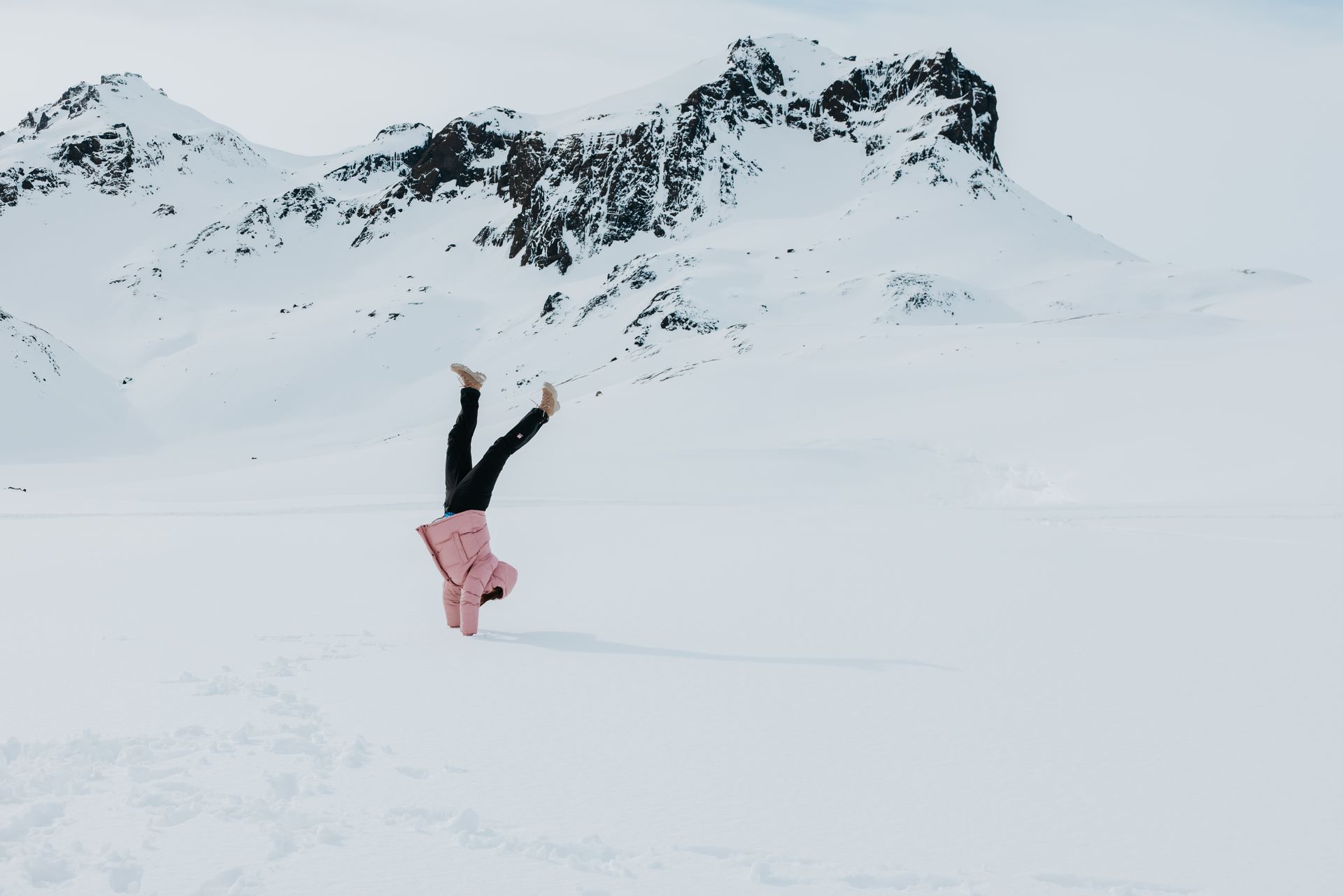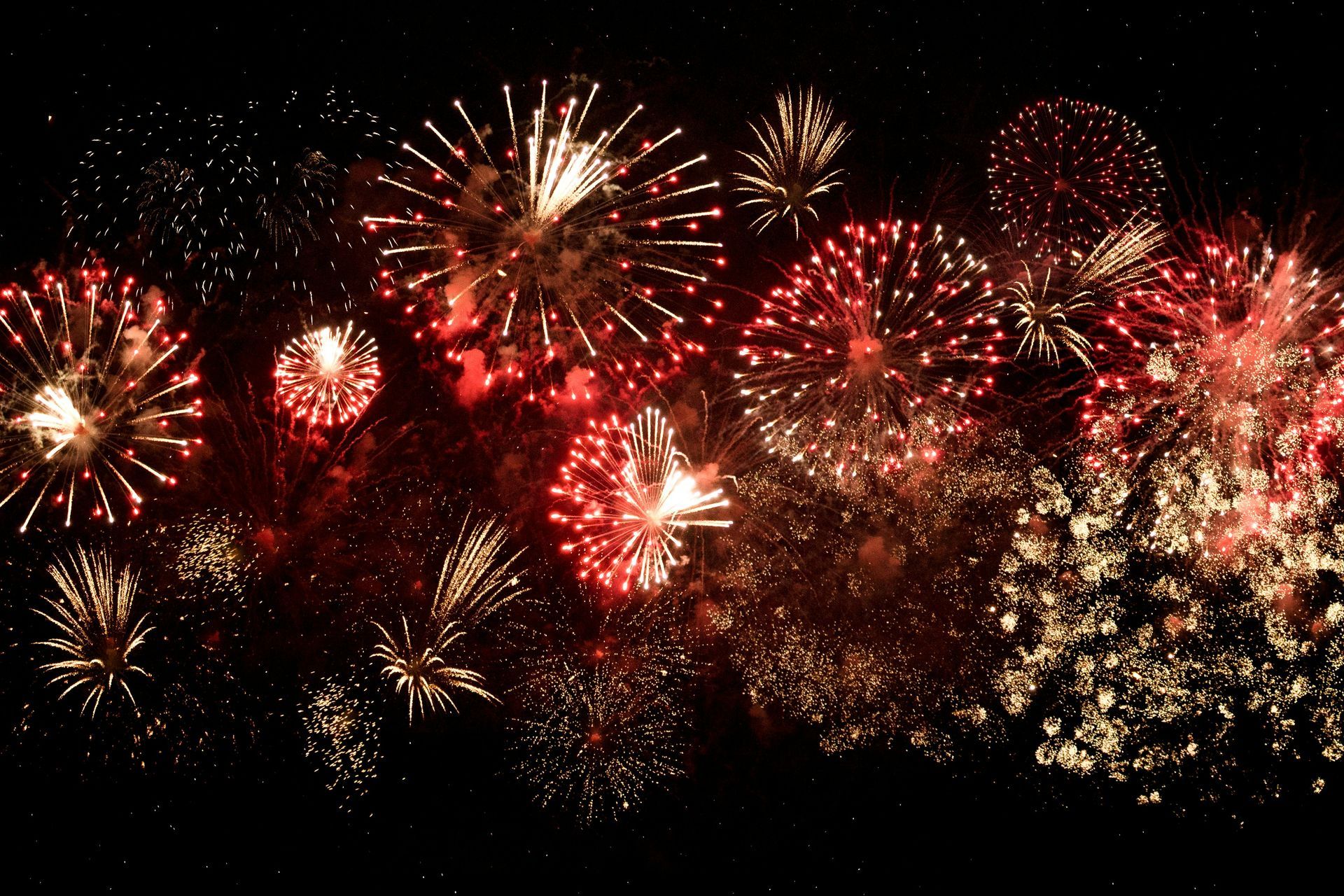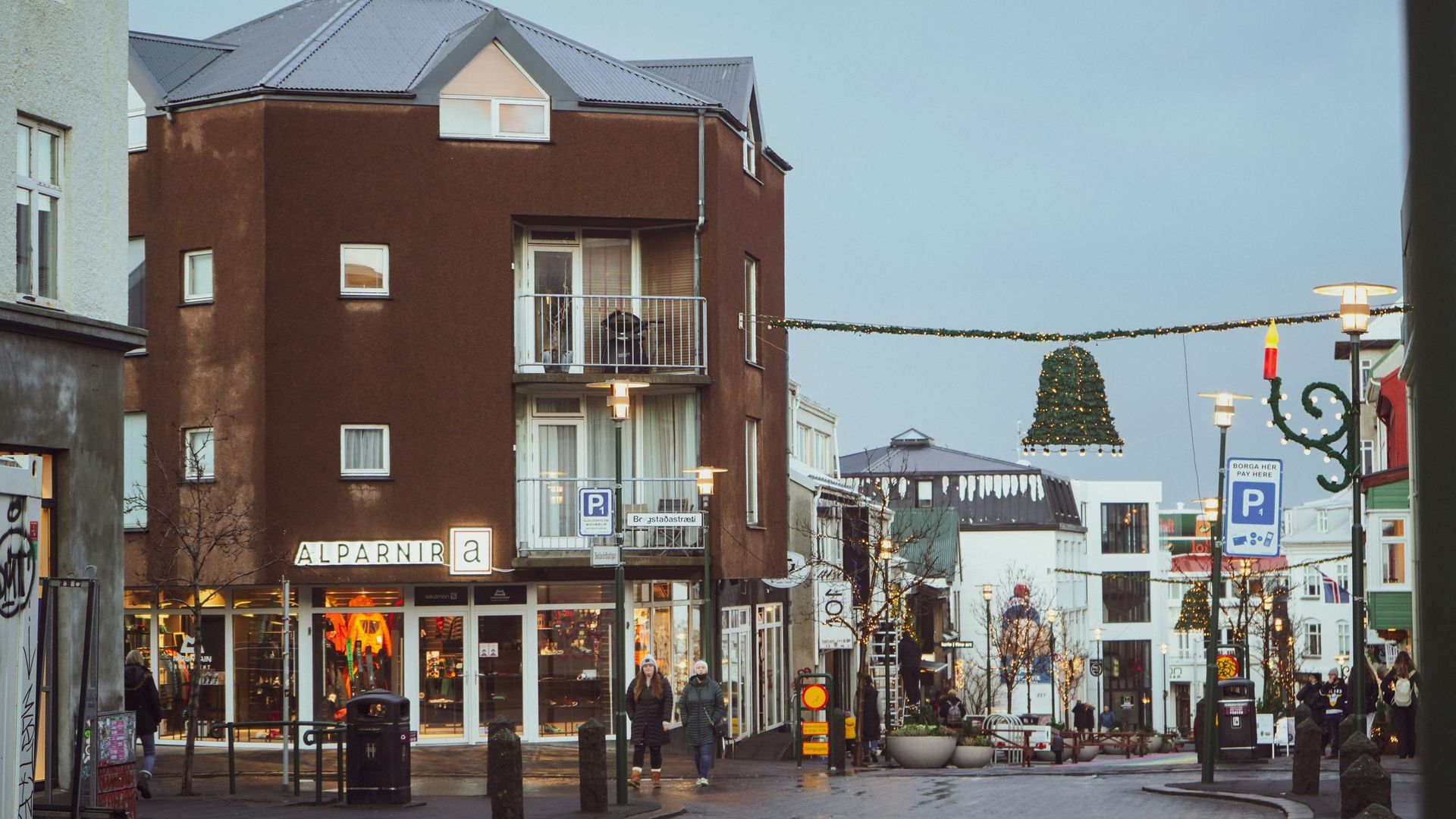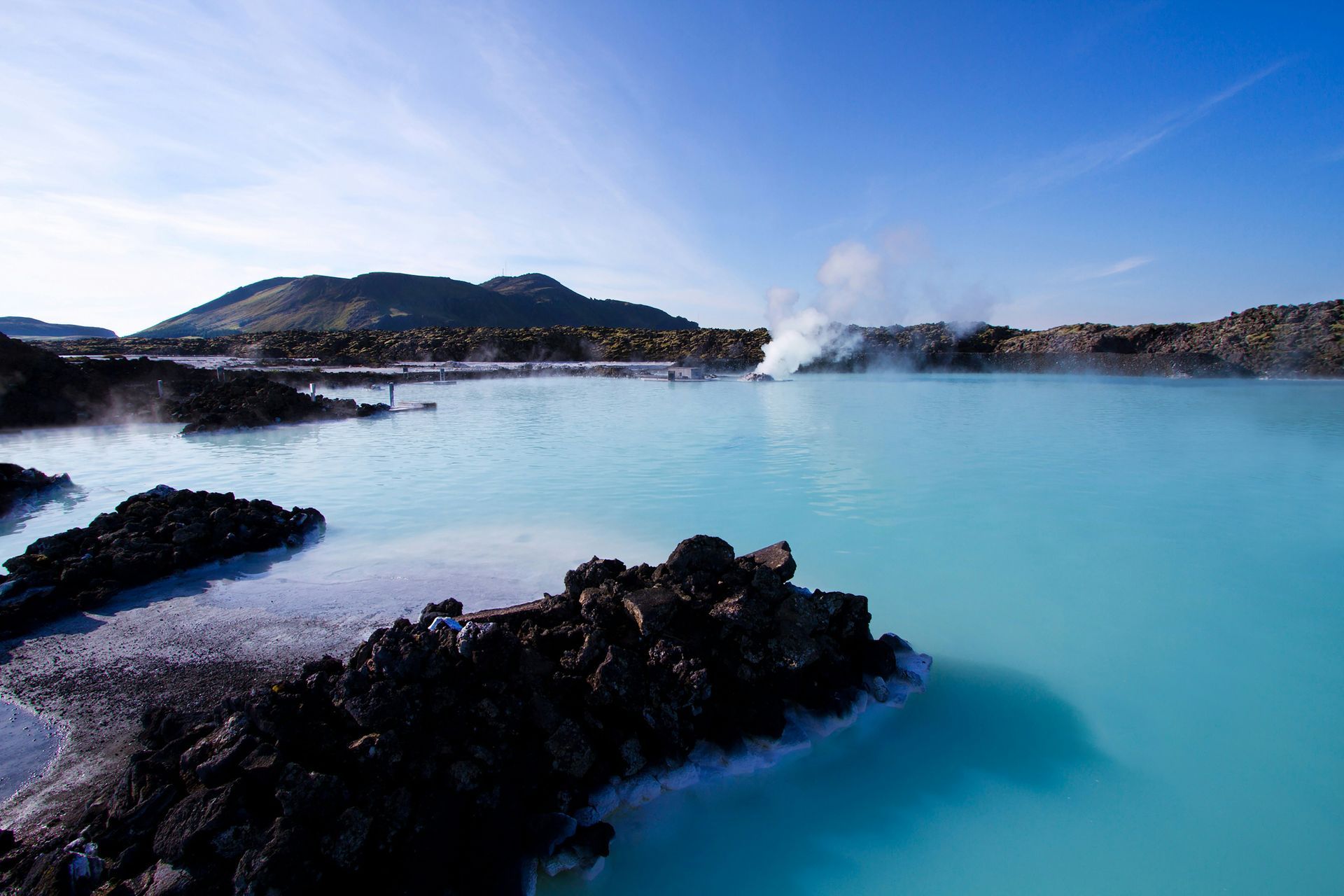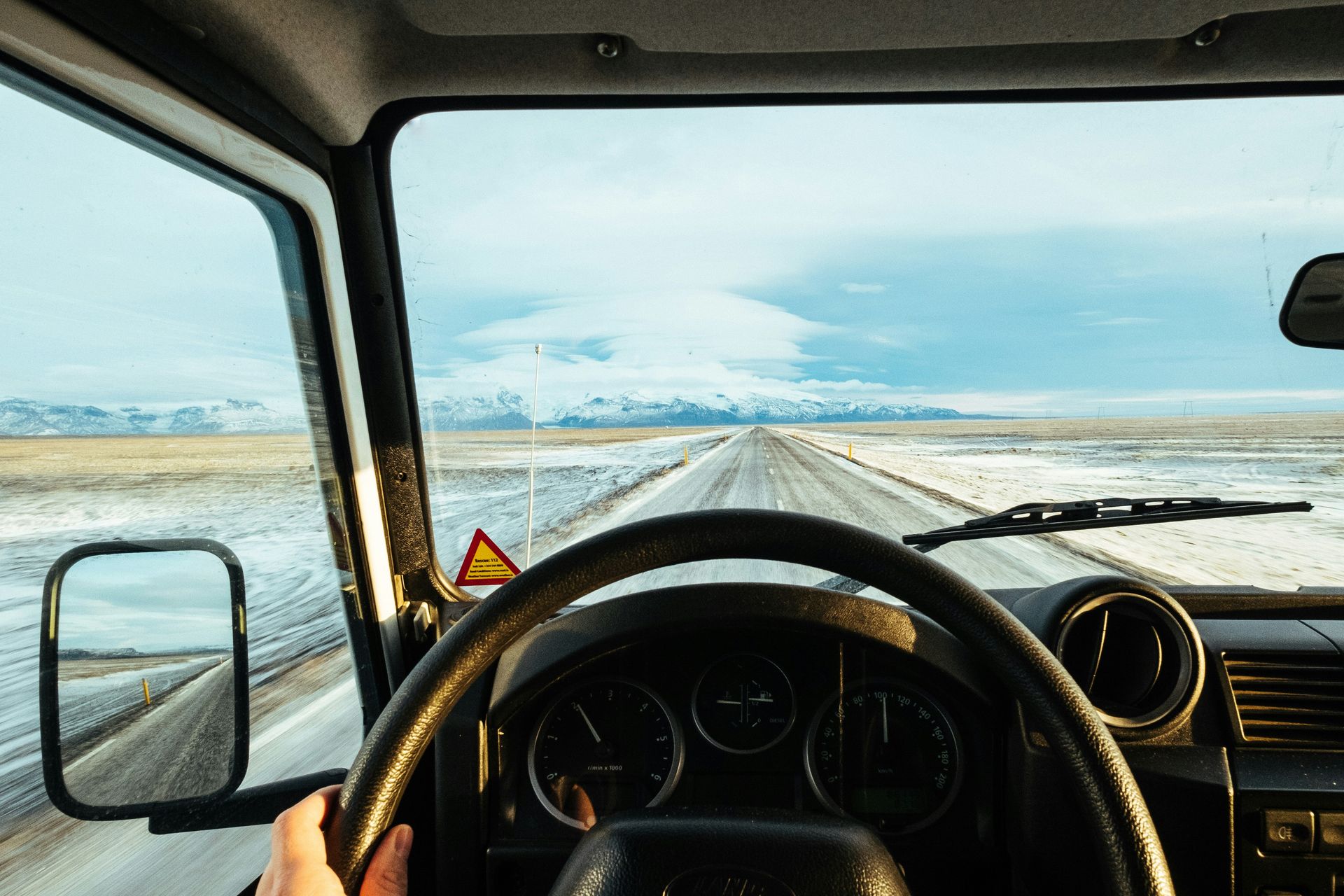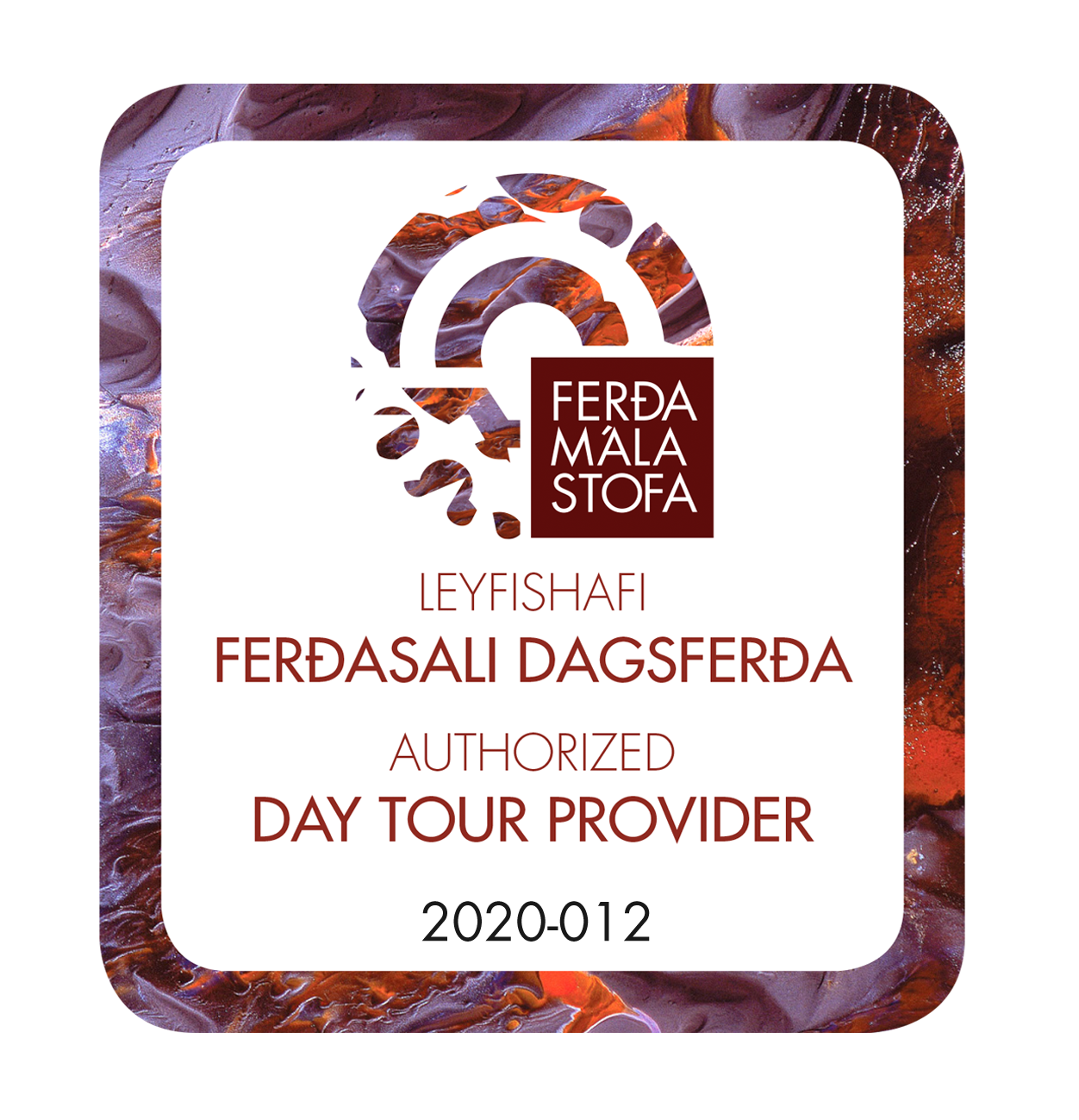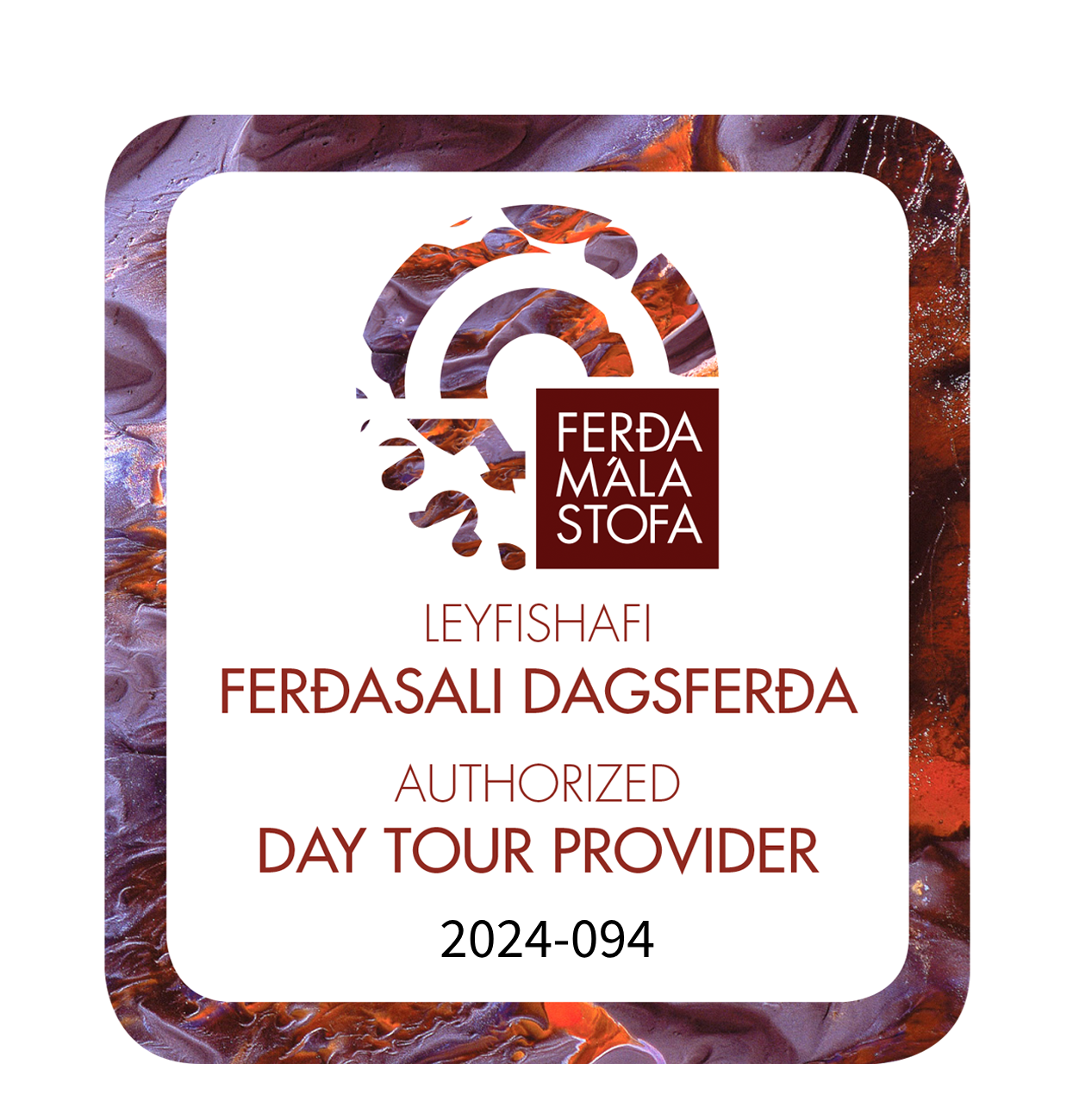Is Langjökull Worth Visiting?
Is Langjökull Worth Visiting?
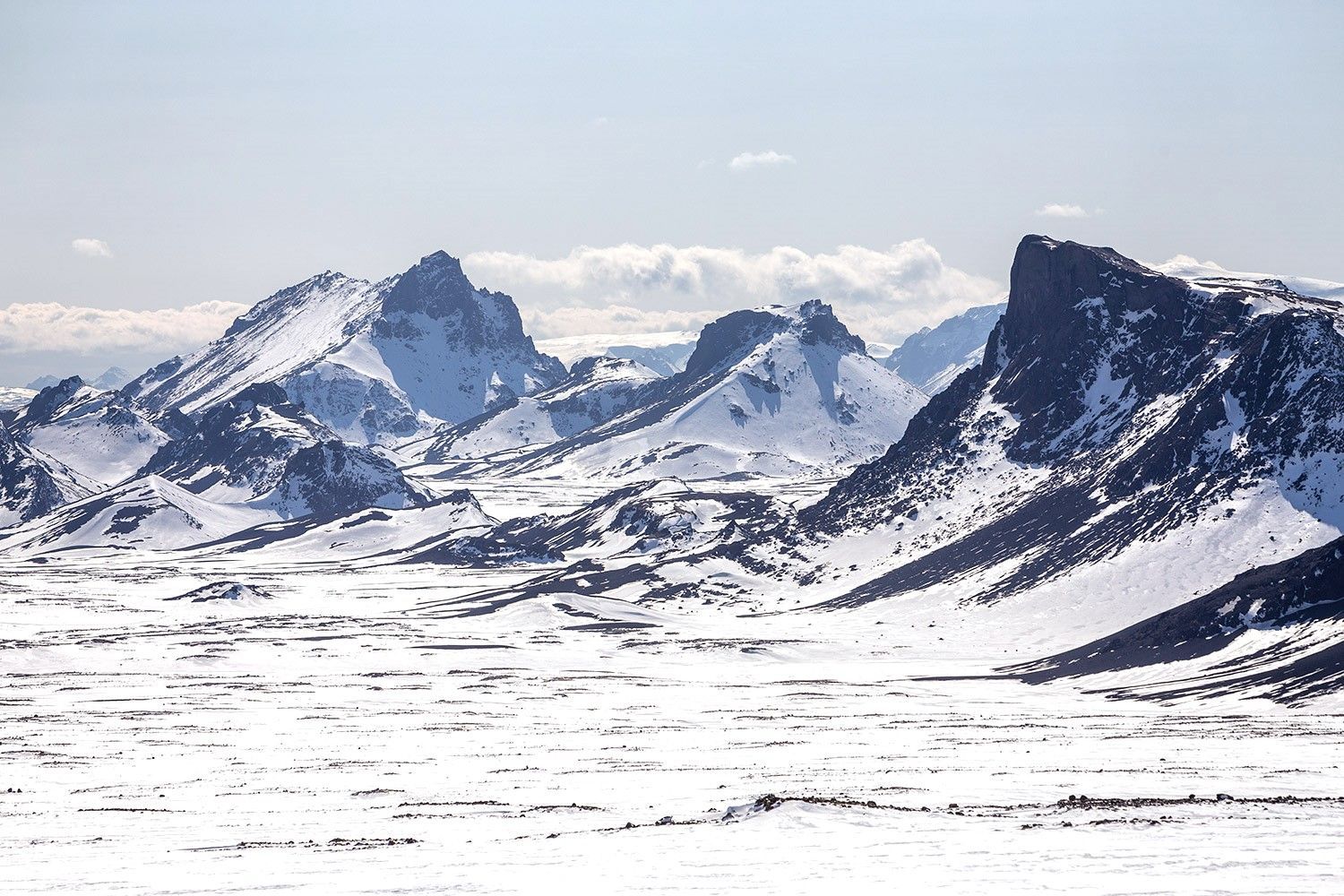
The short answer is - yes!
It's always totally worth visiting something as spectacular as a glacier is. If you want to learn more about glaciers, please read on and we are looking forward to have you onboard for your trip on Langjökull glacier in Iceland.
Langjökull is the second largest ice cap in the country and is truly a world icy adventures and awe-inspiring sights. In this comprehensive guide, we'll answer all your questions about Langjökull Glacier and help you plan the perfect visit.
Firstly... what exactly is a glacier?
A glacier is a large, slow-moving mass of ice, formed from compacted layers of snow, that slowly deforms and flows in response to gravity. They are found in mountain ranges and high-latitude regions (near the North and South poles). Glaciers are important as they are the largest reservoir of fresh water on Earth, and their size and movement can significantly influence the landscape, climate, and ecosystems around them.
About Langjökull Glacier
Langjökull, translating to "Long Glacier" in Icelandic, is the second largest glacier in Iceland and is situated in the west of the Icelandic interior or Highlands of Iceland. Covering an area of about 956 square kilometers (369 sq miles), its volume is 195 km3 (47 cu mi) and the ice is up to 580 m (1,900 ft) thick is renowned for its sheer size and the breathtaking landscapes it offers.
The glacier is also the origin of several major rivers in Iceland, including Hvítá (👉Wikipedia), which creates the iconic Gullfoss waterfall (👉Wikipedia), one of Iceland's popular tourist attractions.
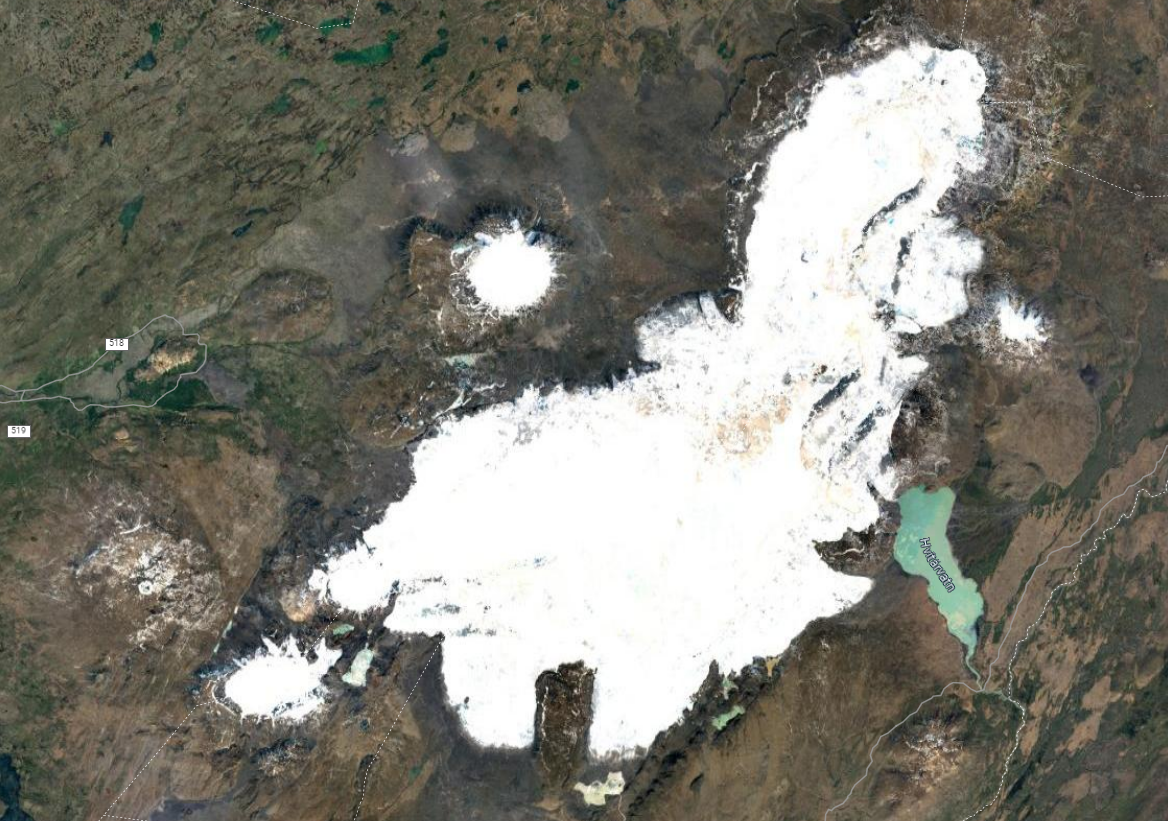
How Old is Langjökull Glacier?
Determining the exact age of a glacier is a complex task, as it involves analyzing the layers of ice that have built up over thousands of years. While it's challenging to pinpoint the exact age of Langjökull, it's safe to say that this glacier started to be at this location about 6,000 years ago, with its ice layers carrying a rich history of climatic changes.
However, the ice that we see on the surface today is much younger, about 450 years old. Glaciers are dynamic and constantly changing - the ice melts and new layers of snow are adding in the winter and becomes ice. Scientists can drill ice cores from glaciers like Langjökull to study the past climate and atmospheric conditions, with each layer of ice serving as a sort of time capsule.
How Large is Langjökull Glacier?
Langjökull is the second-largest glacier in Iceland, covering an impressive area of approximately 956 square kilometers. Its ice is up to 580 meters thick in some places, giving it a tremendous volume. Langjökull extends roughly 50 kilometers in length and 15-20 kilometers in width. This vast icy expanse coudl cover 2/3 of New York City!
Do People Live in Glaciers?
No, people do not live in glaciers, including Langjökull. Glaciers are massive, moving bodies of ice that are not suitable for human habitation due to their harsh and unstable conditions. They are, however, important sites for scientific research and are popular destinations for tours and expeditions. Although there are structures like research stations and the man-made tunnel in Langjökull, they are not permanent residences. Rather, they are used for temporary stays related to tourism or scientific study.
Langjökull Glacier on Google Maps
Langjökull Glacier is located in the west of Iceland's interior highlands. It's relatively accessible from Iceland's capital, Reykjavik, with a drive of approximately two to three hours. The glacier is positioned between the Borgarfjörður (👉Wikipedia) and Húnavatnssýsla regions and is surrounded by various rivers, mountain ranges, and other natural attractions.
You can find detailed maps of Langjökull and the surrounding areas through various online map services or local tour guides. These maps often highlight key points of interest, hiking trails, roads, and important safety information.
3. What is the Biggest Glacier in Mainland Europe? Comparing Langjökull with Others
While Langjökull is the second-largest glacier in Iceland, mainland Europe has also some large glaciers. The Jostedalsbreen(👉Wikipedia) Glacier in Norway, which covers an area of 487 square kilometers, is the largest in mainland Europe (not taking Iceland into account).
In terms of Iceland's glaciers, Langjökull is surpassed only by Vatnajökull (👉Wikipedia), which is not only the largest glacier in Iceland but also the largest in Europe. It covers more than 8% of the country and is around 2,5 times the size of Langjökull.
4. Detailed Geology: Langjökull and Volcanoes
Langjökull isn't just an ice sheet; it's a geologically vibrant region. The glacier sits atop several active volcanic systems, including Prestahnúkur (👉Wikipedia), a central volcano characterized by rhyolite and geothermal activity. It's also home to the subglacial caldera volcano, known as the Langjökull Central Volcano. However, this volcanic system is very quite and does not affect the glacier nor the area significantly.
The geology of Langjökull serves as a vivid illustration of why Iceland has been aptly dubbed the "Land of Fire and Ice." It showcases the dynamic interplay between these potent geological forces that have been instrumental in sculpting and continue to mold the nation's distinctive landscapes.
5. Flora and Fauna Around Langjökull Glacier
While the glacier itself doesn't support much life due to its harsh, icy environment, the areas surrounding Langjökull are home to a variety of flora and fauna. During the warmer months, the regions around the glacier bloom with moss, lichens, and hardy wildflowers such as Arctic Thyme and Sea Thrift. You'll also find dwarf willow and birch trees in sheltered areas.
As for fauna, it's not uncommon to spot birds such as ravens and the Icelandic Ptarmigan (👉Wikipedia). Arctic foxes (👉Wikipedia) are also native to the region, although they are elusive and less often seen by visitors.
6. Climate Change Impact on Langjökull Glacier
Climate change is having an impact on Langjökull Glacier. Langjökull is shrinking due to the warmer weather. Langjökull today is still bigger than it was during the settlement times of Iceland in the years 874 - 930. That is due to the colder climate in the so called Little Ice Age that occured from 16th to 19th century. While areas in North Europe were also heavily affected by the Little Ice Age, in Iceland it was a harsh time to live in. During the Little Ice Age, the glaciers in Iceland (and anywhere else) were growing, with their peak in the late 19th century. Nowadays the glaciers are retreating. Because climate does not change linear, it is hard to predict how fast the glaciers will be melting.
7. Winter Sports and Attractions on Langjökull Glacier
Langjökull Glacier is a mesmerizing spectacle that goes beyond being just a sight to behold. It acts as a central hub for winter sports and attractions, offering thrilling activities like snowmobiling, super jeep and monster truck tours. One of its most distinctive features is the man-made ice tunnel as well as natural Ice Caves which allows visitors to delve into the heart of the glacier and witness the stunning blue ice at its core.
While activities like skiing and snowboarding are less common on the glacier itself due to safety and terrain considerations, they can be enjoyed in nearby areas. Reputable tour operators provide guided winter tours, ensuring an adventurous yet safe experience.
Snowmobiling Tours
Snowmobiling is a popular activity on Langjökull Glacier. Daily tours offer riders a chance to experience the vast, open landscapes of the glacier, a thrilling experience for both locals and visitors alike.
Super Jeep Tours
Langjökull's terrain is complex, requiring specialized vehicles for access. Super Jeep tours, using large, custom vehicles, are a common way to safely reach the glacier.
Into the Glacier
This tour allows visitors to explore Langjökull's man-made ice tunnel.
Sleipnir Monster Glacier Truck Tours
🔥🚒 USE special code👉 SLEIPNIRBLOG👈 for -25% for all Sleipnir Glacier Tours from Gullfoss
At Sleipnir Tours Iceland, we specialize in creating memorable adventures on Langjökull, Iceland's stunning glacier. Our top-notch glacier trucks prioritize your comfort and safety, ensuring you can fully enjoy the breathtaking Icelandic landscapes.
We're flexible in meeting various needs, providing custom experiences for individuals or groups. Our commitment to great service motivates us to exceed our customers' expectations and constantly improve what we offer.
Our Sleipnir trucks are specially built for Langjökull's challenging terrain, reinforcing our focus on safety. We conduct regular scouting missions to guarantee a safe and secure journey for all passengers.
With over thirty years of experience, our passionate team is excited to share the secrets of Iceland, making your tour an enriching experience.
Our summer tours are filled with fun activities like glacier golf and sledding, topped off with a taste of the unique liqueur, Jökla. In winter, we guide guests to explore mesmerizing natural ice caves.
The highlight of our offerings is the Sleipnir Monster Glacier Truck tour. This deluxe experience provides a unique perspective of the glacier, capturing the interest of all adventure seekers.
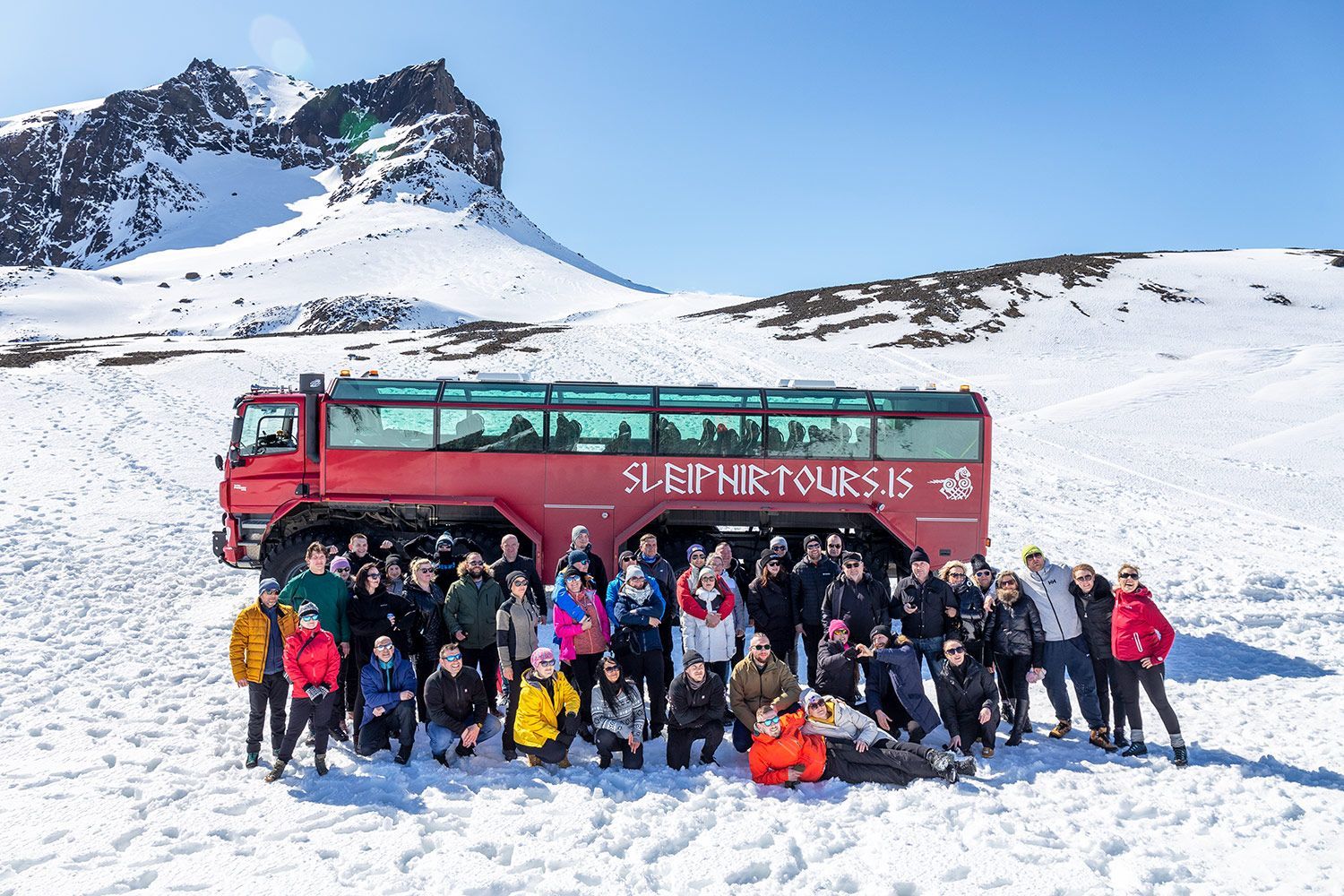
photo by: Wojciech (snær) Piotrowicz @sner_iceland
8. Can You Go Inside the Langjökull Glacier?
Indeed, one of the highlights you must experience when visiting Langjökull is the opportunity to explore the man-made ice tunnel. Since 2010, visitors have been able to embark on a thrilling journey to the heart of this mighty ice cap through the man-made tunnel known as "Into the Glacier". This immersive experience takes you into the midst of radiant blue ice, where you learn about the glacier's formation, history. The temperature inside the tunnel remains around -2 degrees Celsius (28 degrees Fahrenheit), so remember to dress warmly!
In terms of natural ice caves, the Sleipnir team offered during the winter month a visit to a natural ice cave in the past. While natural ice caves are beautiful and different each year, they last only for one winter, and are filled with water during summer. Natural ice caves are created during the summer by the meltwater. With the new manmade ice cave that will open in November 2024, travelers can add an extra element of excitement to the Golden Circle tour by starting the tour from Gullfoss waterfall to the Langjökull glacier and the man made ice cave.
9. The Golden Circle and Langjökull Glacier
Langjökull, the glacier closest to Reykjavik, offers a unique addition to your Icelandic adventure. The Golden Circle, a celebrated excursion route, already guides visitors through some of the country's most iconic landmarks. These include the historic Þingvellir National Park 👉 Wikipedia, the geothermally active Geysir Geothermal Area 👉 Wikipedia, and the mesmerizing Gullfoss waterfall 👉 Wikipedia.
Yet, the opportunity for adventure doesn't stop there. With Sleipnir Tours, you can extend your Golden Circle journey to include an extraordinary visit to the majestic Langjökull Glacier. Once you've completed the Golden Circle at Gullfoss, you're invited to board our Sleipnir Monster Truck. This world-renowned, largest glacier truck is designed to safely navigate the challenging terrains of the glacier while providing you with breathtaking panoramic views of the icy landscapes.
The thrill of riding the Sleipnir Monster Truck is an adventure itself, enhancing the overall experience of your Icelandic exploration. By combining the Golden Circle tour with a visit to Langjökull via our Monster Truck, you're setting the stage for an unforgettable journey.
10. Practical Information on Visiting Langjökull Glacier
Langjökull is located in the west of Iceland's highlands and is accessible year-round, weather permitting. Guided tours offer the safest and most informative way to explore the glacier. Tour operators provide necessary safety equipment and transport, often using specially adapted vehicles to traverse the glacier. Make sure to pack warm and waterproof clothing, good hiking shoes, sunglasses, and sunscreen.
Is Glacier Hiking Safe in Iceland?
Glacier hiking in Iceland is generally safe when done under the supervision of experienced guides. The guides are trained in safety protocols and have a deep understanding of the glacier’s conditions and weather patterns. Remember, glaciers are ever-changing landscapes with potential hazards like crevasses and unpredictable weather, so going with a guide is crucial.
Which is the Best Entrance to the Glacier? / How to Get to Langjökull Glacier?
From Gullfoss: Begin on the Kjölur road (F35) and drive northward for around 30 km. Then, take a turn onto the Skálpanes road (336). Continue on this road until its endpoint to arrive at the glacier. Keep in mind that during winter, road F35 from Gullfoss is closed for public traffic. Check your rental car agreement, as it can be that Kjölur is only suitable for 4WD vehicles.
Klaki Base Camp: From Húsafell, take road 518 for approximately 3 km to access the Kaldidalur road 550. Drive for about 12 km, then turn onto road 551 (Langjökullvegur). Follow this road to its end (about 9 km) to reach the glacier. Just before the entrance, you'll find Klaki Base Camp. In summer, a 4x4 vehicle can make the journey from Húsafell. However, in winter, due to snow, a special super-jeep tour might be necessary.
Note: do not drive on a glacier with your rental car/jeep. Those vehicles are not equipped for driving on glaciers, additionally, only experienced drivers should attempt to drive on a glacier. The safest way to enjoy a tour on the glacier is with a professional tour operator.
Can You Visit Langjökull Glacier on Your Own?
While it's possible to visit the area around Langjökull on your own, venturing onto the glacier itself should not be done without a professional guide. Glaciers are complex and potentially dangerous if you're not familiar with the environment. Guided tours ensure you can enjoy the beauty and thrill of Langjökull safely.
What is the Best Time of Year to Visit Langjökull Glacier?
Langjökull welcomes visitors throughout the year, but the best time for your visit depends on the experiences you're after. The winter months, from mid September to mid April, provide the opportunity to witness the magical Northern Lights during your tour in Iceland. Conversely, the summer season from June to August offers milder weather and extended daylight hours, ideal conditions for hiking and sightseeing.
What Should I Wear on Langjökull Glacier Tours?
Dressing appropriately is crucial for a comfortable glacier visit. Layered clothing is recommended, as it allows you to adjust to changing weather conditions. Start with thermal base layers, add an insulating mid-layer such as fleece, and finish with a waterproof and windproof outer shell. Don't forget a hat, gloves, and sturdy, waterproof hiking boots. You should also consider sunglasses, preferably with UV protection. This is due to the glare from the sun reflecting off the snow and ice, which can be intense and harmful to the eyes.
How do I Get from Reykjavik to Langjökull?
To Klaki Base Camp from Reykjavik:
From Reykjavik, reaching Klaki Base Camp near Langjökull takes roughly 2.5 hours by car. Start on Route 1 towards Borgarnes. After Borgarnes, take Route 50, followed by Route 518 leading towards Húsafell.
To Gullfoss from Reykjavik via Route 36 and Route 365:
This route is approximately 1.5 to 2 hours. From Reykjavik, head onto Route 36, leading to Þingvellir. From there, switch to Route 365 until Laugarvatn, and then follow Route 37 to Geysir. Continue on Route 35 from Geysir to reach Gullfoss.
To Gullfoss from Reykjavik via Route 1 and Route 35:
This journey takes about 1.5 to 2 hours. Start on Route 1 from Reykjavik, then at a junction past Selfoss, switch onto Route 35, which will take you directly to Gullfoss.
For details on the route from Gullfoss to Langjökull or from Húsafell to Klaki Base Camp, please see the sections above "Which is the Best Entrance to the Glacier?" / "How to Get to Langjökull Glacier?".
Is Glacier Water Safe to Drink?
Yes, the surface meltwater on the glacier in Iceland is generally safe to drink. Glacial meltwater is often very pure because it's been frozen for hundreds of years and therefore hasn't been exposed to many contaminants. That being said, it's recommended to fill your bottle from a running stream rather than stagnant water to ensure it's as fresh as possible. Always use your best judgment and consider carrying a portable water filter for added safety if you plan to drink from natural sources during your trip. Do never drink from Glacial Rivers though! You can see the water at Gullfoss waterfall has a milkish colour, that is due the grinded down stone, the so called Silt.
How Cold is the Inside of a Glacier?
The temperature inside a glacier is generally around freezing point, 0 degrees Celsius (32 degrees Fahrenheit). However, the exact temperature can vary depending on several factors, including the depth within the glacier, the time of year, and the specific location of the glacier.
In some very large glaciers or ice sheets, the immense pressure from the overlying ice can cause the temperature to increase slightly below the surface. But even then, it typically remains below or very close to the freezing point.
When touring a glacier or exploring a glacier cave, the surrounding air can often feel colder due to the chilling effect of the ice. Therefore, it's important to dress appropriately in thermal layers when embarking on such an adventure.
11. Accommodations: What are the Hotels near Langjökull Glacier?
There are numerous accommodations options near Langjökull Glacier to suit a variety of budgets and preferences. From luxury hotels and comfortable guesthouses to rustic cabins and camping grounds, here's a selection of the best-rated options:
Hotels
East side - or the Golden Circle side:
- Hótel Gullfoss👉 click here: Located near the famous Gullfoss waterfall, this hotel provides a blend of comfort, convenience, and natural beauty.
- Blue Hotel Fagrilundur 👉click here: Right beside the famous Fridheimar Tomato farm, this hotel in the village Reykholt is a perfect location for your tours around the Golde Circle.
- Farmhotel Efsti Dalur 👉 click here: Located on a working farm, you can see horses, cows, cattle, dog and cats! The hotels restaurant offers local produce and home made ice cream!
- Hotel Geysir 👉click here: Top location in a top hotel! Rebuild only a few years ago, this hotel offers large rooms, an amazing restaurant and top service.
West side:
- Hotel Húsafell 👉 click here: Nestled in the forested area of Húsafell, this luxury choice offers chic rooms and stunning views of the surrounding landscape.
- Hótel Á 👉 click here: Enjoy the comfort and convenience of this well-rated hotel, perfectly situated for your glacier adventure.
Guesthouses, B&B, and Farmstays
- Guesthouse Steindórsstaðir👉 click here: Experience authentic Icelandic hospitality at this charming guesthouse.
- Nes Guesthouse👉 click here: This well-appointed guesthouse offers comfortable lodgings for your glacier visit.
- Kópareykir Holiday Homes👉 click here: Enjoy the comfort of a home away from home in these holiday homes.
- Skjól👉 click here: Offering cozy accommodations and local charm, Skjól is a welcoming place to stay.
- Geysir Hestar👉 click here: Close to the famous Geysir, this accommodation offers an additional attraction for horse lovers.
- Jaðar – The Old House👉 click here: Experience a piece of history at this vintage accommodation.
- Mengi Kjarnholt👉 click here: Enjoy the tranquility of this countryside lodging, offering modern comforts and rural charm.
Cabins and Cottages
- Gljásteinn Gíslaskáli Mountain Hut Kjölur 👉 click here: For the adventurous traveler, this mountain hut offers a unique stay in the Icelandic wilderness.
- Kerlingarfjöll Mountain Resort👉 click here: Stay in comfortable and cozy cabins in the heart of Iceland's mountainous terrain.
- Geysir Cottage👉 click here: These quaint cottages provide a homely and comfortable stay near the iconic Geysir.
- Úthlíð Cottages👉 click here: Enjoy stunning views and peaceful surroundings in these idyllic cottages.
Camping near Langjökull
Geysir Camping Ground 👉 click here: Located within walking distance of the great Geysir. Facilities on-site include showers, toilets, electricity, washers, Wi-Fi, a golf course, and a playground. This camping ground is open from the 15th of May – the 15th of September.
12. Nearby Attractions and Destinations to Visit
Beyond Langjökull, the region hosts a number of other must-see attractions. You can find a complete list, along with a map featuring pins to these sites, in our Golden Circle article: https://www.sleipnirtours.is/is-the-golden-circle-route-worth-it-a-comprehensive-guide-to-iceland-s-most-iconic-tour
13. What films and music videos were shot on Langjökull Glacier?
Films:
- Oblivion (2013) 👉 click here: has some scenes shot at the staggeringly beautiful Jarlhettur e. Earl’s Hat that sits right next to Langjökull and the view is of Langjökull in the film. One of the Natural Ice Caves found at Langjökull was right under the newly famous mountains. Here you can see more about filming there.
- The Iron Giant (1999)👉 click here: The final scene of the cartoon Iron Giant takes place on Langjökull although the name of the glacier, which appears in large letters across the screen, is misspelled “Langjoküll” instead of the correct spelling which is “Langjökull”.
Music Videos:
- Mist – Hot Property (2017)👉
click here: The UK rapper Mist shot his music video for the song Hot Property at Langjökull glacier where he and his crew drove snowmobiles around with guides from Arctic Adventures on a private tour.
- David Guetta ft. Sia – She Wolf (2012) 👉 click here: The wolf running and the dog sledding part of the video is taken at Langjökull and many of the Eskimo/Viking parts are in the area surrounding the glacier.
14. Safety Tips and What to Pack for a Visit to Langjökull
Visiting a glacier requires preparation to ensure safety and comfort. Here are some tips:
- Never venture onto the glacier without a professional guide.
- Dress in layers to manage changing temperatures. Include thermal base layers, an insulating mid-layer, and a waterproof, windproof outer layer.
- Wear sturdy, waterproof hiking boots.
- Always have a hat, gloves, sunglasses, and sunscreen.
- Carry a backpack with water, snacks, and a first aid kit.
- Check the weather forecast before your visit and heed any safety advisories.
- Respect the environment and follow the leave-no-trace principles.
Remember, your safety is paramount. A visit to Langjökull should be an enjoyable, memorable experience, and proper preparation will help ensure that it is.
15. Is Langjökull Glacier Worth Visiting? An Overview
Absolutely. Langjökull is not just one of Iceland's largest glaciers, but also one of its most diverse and accessible. Whether you're a thrill-seeker hoping to snowmobile across a vast ice cap, a nature lover wanting to explore a unique ecosystem, or a geology enthusiast keen to see the interaction of ice and volcanic activity, Langjökull offers something for everyone. Its location near several other major attractions and Reykjavik makes it a key highlight on any Icelandic itinerary.
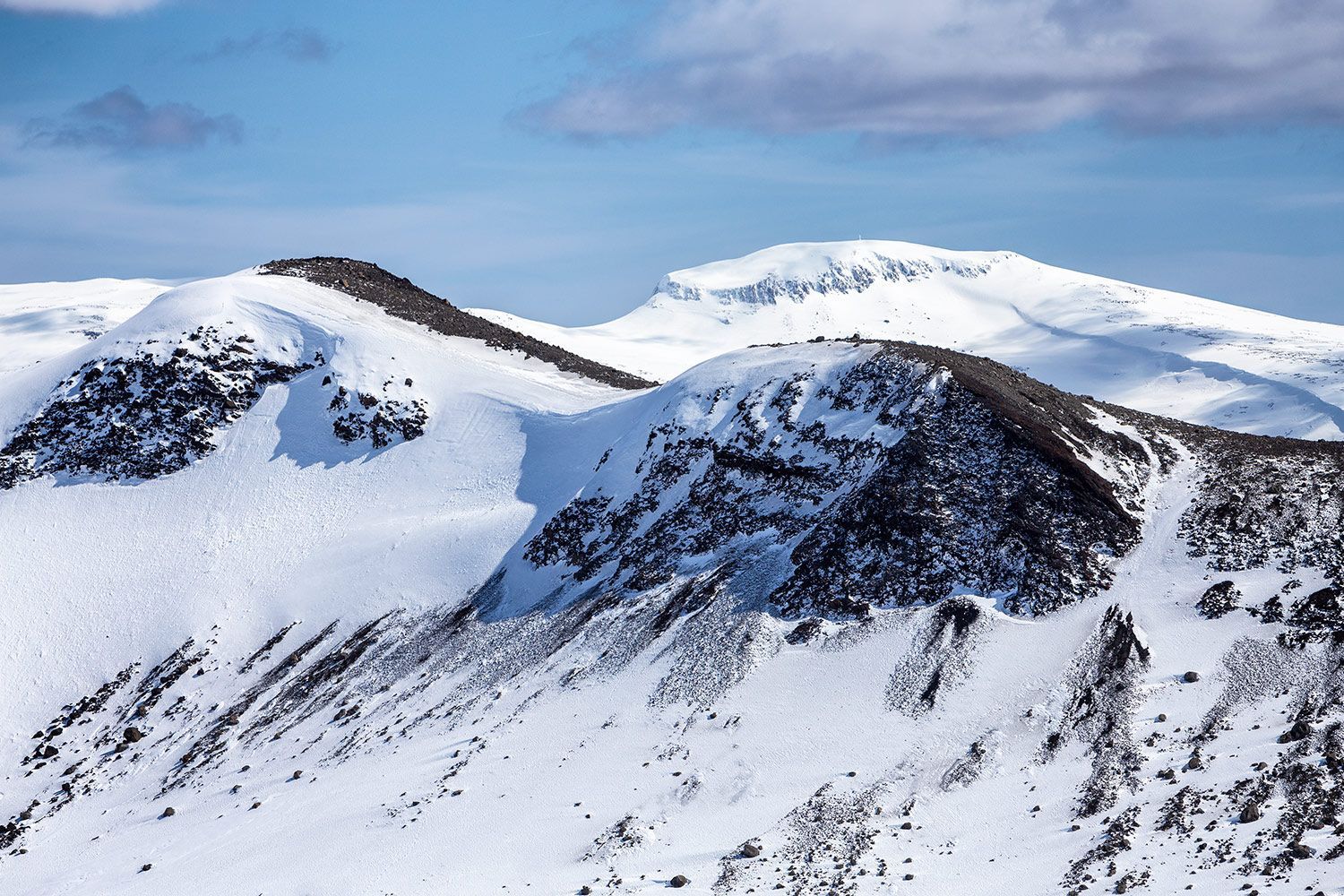
photo by: Wojciech (snær) Piotrowicz @sner_iceland
Share This Blog Post
